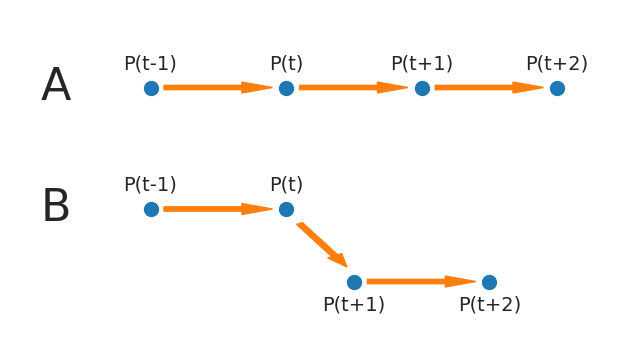Let's imagine we've got a uniformly sampled curved trajectory of a moving ball in 3D space without gravity. Let's assume that some dynamic force is applied to the moving ball to update its trajectory between samples. Is it possible to estimate minimal energyefforts required to update trajectory of the moving ball between samples?
In case A there was no force applied between t and t+1 because the ball moved with constant speed.
In case B some dynamic force changed position of the ball from P(t) to P(t+1)
I would like to know the way to estimate minimal energyminimal efforts required to move the ball from P(t) to P(t+1) in general case.
Edit:
One possible interpretation of "effort" might be the time integral of the magnitude of the force applied. This would quantify the total "scalar impulse" applied on the ball. This is also the relevant quantity when you want to perform a maneuver in a spacecraft by consuming the least amount of fuel (assuming the change in the mass of the spacecraft is negligible)

